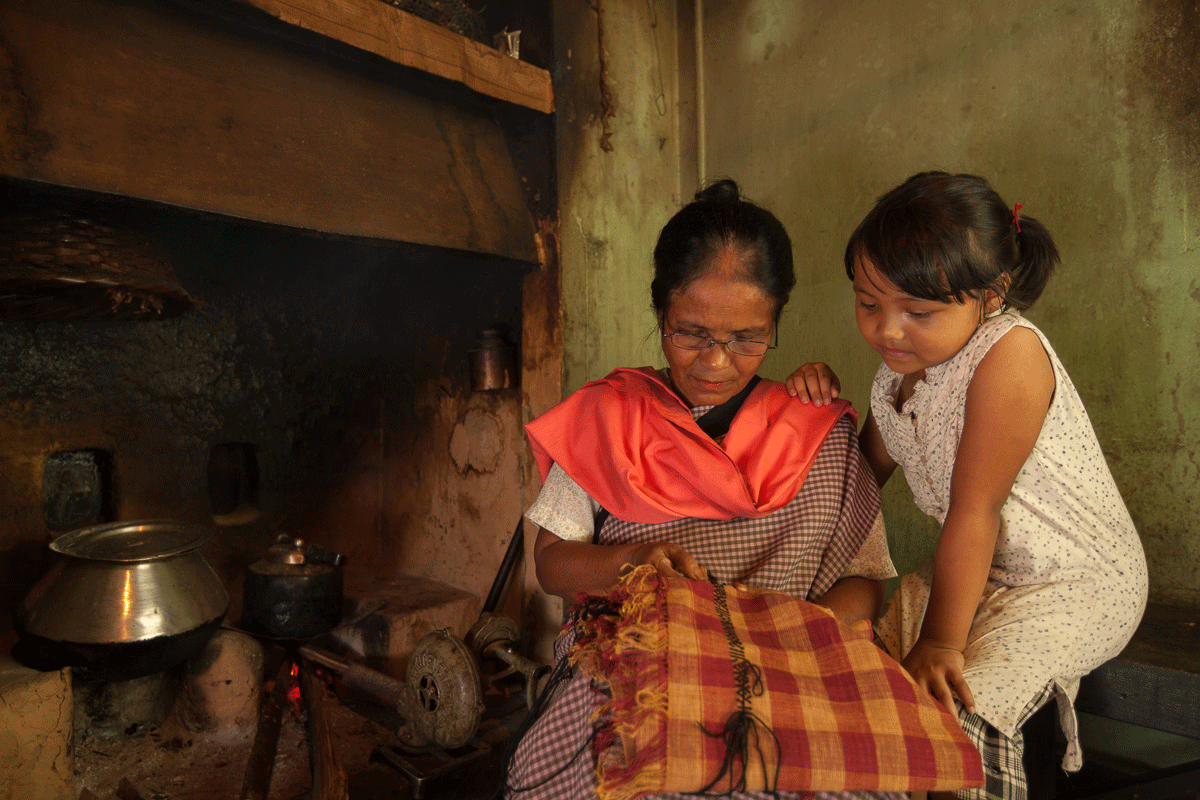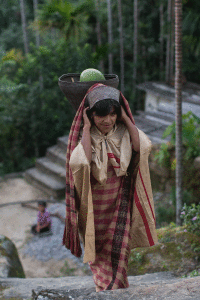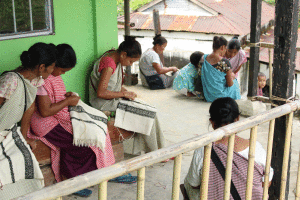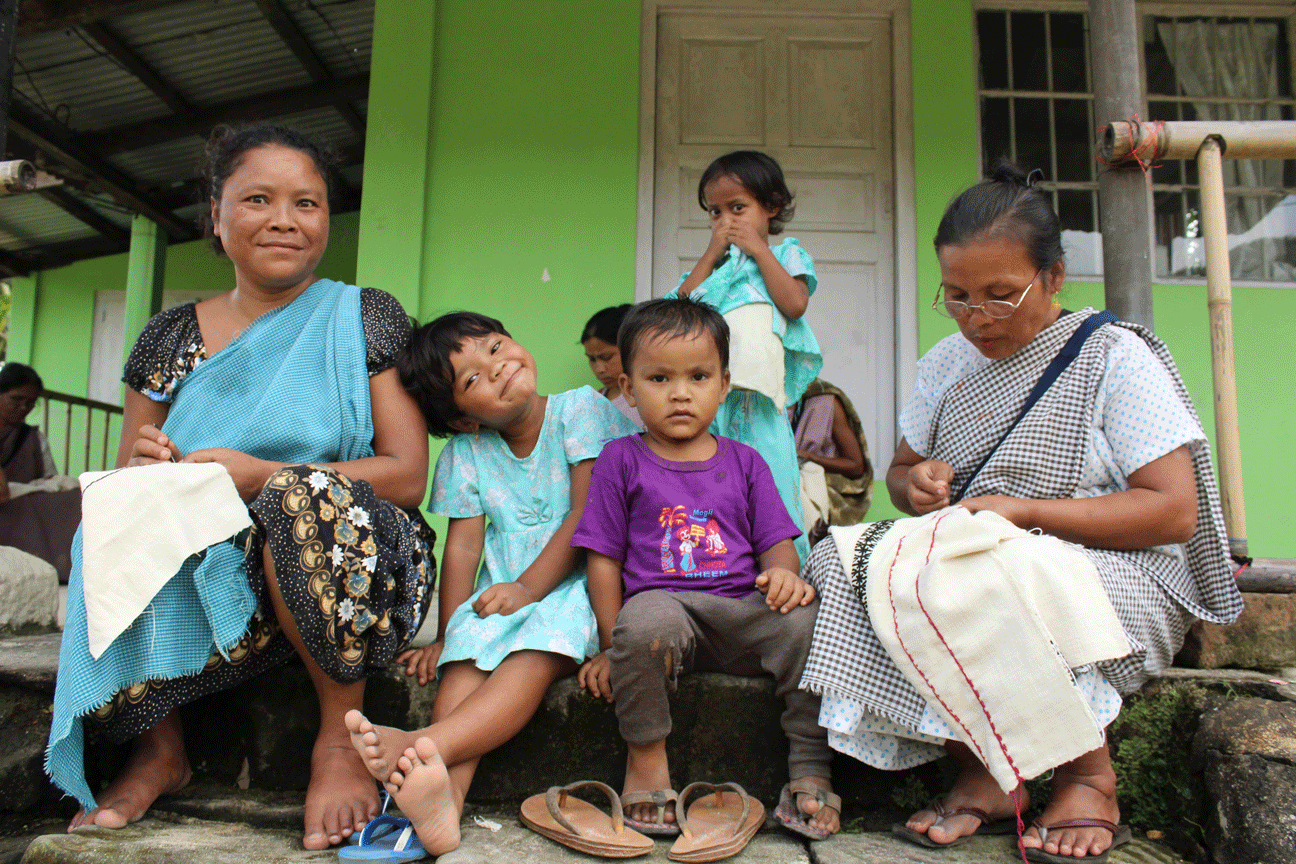She counts the thread of the fabric and works in a stitch to make a pattern repeated through the entire stretch of the ryndia, better known as the eri silk. Bliwtibon Mawa, 65, until recently was one of the last three women who carried knowledge of the Khneng embroidery, the only known traditional embroidery technique of Meghalaya.
The thread-work is unique and embellishes the traditional outfit of the people of Mustoh and Shella which consist of a wrap round made of eri called the jainpien, the cape made of fine silk called the jainit, and the shawl called the jainkup. An original jainpien has a thick band of Khneng running vertically and a jainkup has two running horizontally.
What probably lead to the disappearance of the Khneng was the fact that the embroidery was done by both the women of Mustoh and Shella though later only the women of Mustoh retained the knowledge even though the women of Shella wore the same garb as them and only on eri silk, a fabric which was brought in by traders from Ri-Bhoi District, considered a far of place for a rural area which has only recently become directly approachable by road. The fabric is also relatively expensive and the addition of the Khneng more than doubles its cost. Moreover, one would be happy owning even just one piece. At some point the traders stopped bringing eri to Mustoh because of the evident fall in demand. Meanwhile, the knowledge of the existence of Khneng artisans was lost, meaning that even if the people of Shella wanted to have Khneng work done on their jainpien and jainkups they no longer knew where to get it done. The fate of Khneng was doomed with only three women making any sort of earnings from it until recently when the world was introduced to it.
Khneng was rediscovered when the danger of its disappearance was brought to light to Mr Phrang Roy, Chairman of North East Slow Food & Agrobiodiversity Scoiety (NESFAS), by his family who have their ancestral home in Mustoh. Around the same time Special Purpose Vehicle Society (SPVS), Meghalaya, under the Chairmanship of Mr. G. P. Wahlang (IAS), former Chief Information Commissioner of Meghalaya was looking to support activities within the region. The two organisations took a decision to jointly work to revive the Khneng.
Following preliminary visits in December 2014, NESFAS initiated a workshop on preservation of Khneng from the 28th January to 5th February 2015 with the help of local consultant, Ms Lajoplin Nongsiej and Anna-Loiuse Meynell, consultant from Scotland who represented NESFAS. It was conducted with the last three knowledge holders of Khneng and 11 trainees from the village willing to take it up and focused teaching of simple patterns and the names of the various patterns. The second workshop was conducted from the 6th – 20th April 2016 with focus on advanced patterns following analysis of old pieces. By then, two trainees dropped out and one, a school going student, opted to learn from home. To keep the trainees occupied in between workshops, they were given home exercise to build on their skills. A third workshop was conducted on the possibilities of use of natural fibres as thread. It is believed that originally, a natural fibre made of grass was used to stitch the patterns. Unfortunately, over time, the knowledge of the thread used traditionally was lost which was replaced with acrylic wool. The workshop led to the conclusion that the best alternative is cotton when a comparison was drawn between cotton, eri and muga silk thread.
SPVS further supported the workshop by funding a medical eye checkup for the Khneng artisans later that year in September based on the fact that the Khneng needlework strains the eye and could lead to vision issues. As expected, eight of the artisans were found to require spectacles.
After the training, small orders were placed with the women and their pieces were showcased at the Indigenous Terra Madre (ITM) 2015 which was held in November. The pieces, including stoles, mufflers, clutches and pencil cases, were also on sale for the people who came to the Mei-Ramew Food Festival which marked the closing of the 5-day event.
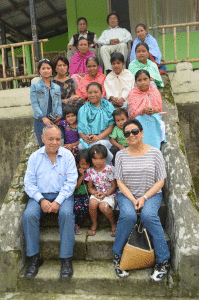
Top to bottom, Left to right: Dr. D. Khonglah, Mr. G. P Wahlang, Berlincy Kongri, Phaitimul Rimai, Lajoplin Nongsiej, DR. C. D. Lyngdoh, Bliwtibon Mawa, Asibon Mawa, Banisha Synrem, Irilinda Kongri, Victoria Synrem, Mr. Phrang Roy, Anita Roy. Photo: NESFAS/Raisa Daimary
Most recently, Mr. Phrang Roy along with Ms Anita Roy, Board Member, NESFAS, Mr. G. P. Wahlang, SPVS consultant – Dr. D. Khonglah, local supporter of Khneng – Dr. C.D. Lyngdoh, local consultant – Ms Lajoplin Nongsiej and I visited Mustoh to meet the artisans and discuss future work for Khneng.
The discussion looked at addressing the fact that eri is bought from other regions which requires investment, creation of opportunities to reduce investment through rearing of eri silk worms to add to the income, planting of locally suited food plants for eri silkworms possibility of formation of a Self Help Group for the Khneng artisans, collection and documentation of more old pieces for patterns, capacity building of more women while creating a market for it, and introduction of eri weaving locally through an existing weaving society present in Shella which the group later visited.
Top to bottom, Left to right: Dr. D. Khonglah, Mr. G. P Wahlang, Berlincy Kongri, Phaitimul Rimai, Lajoplin Nongsiej, DR. C. D. Lyngdoh, Bliwtibon Mawa, Asibon Mawa, Banisha Synrem, Irilinda Kongri, Victoria Synrem, Mr. Phrang Roy, Anita Roy.
Photo: NESFAS/Raisa Daimary
The three trainers, Bliwtibon Mawa, Asibon Mawa and Victoria Synrem still will continue to teach 9 trainees till they are reasonably proficient till new trainees are taken up; many of them are waiting in the wings, eager to learn.
Today, a small piece the size of a muffler earns a Khneng artisan about 300 – 600 rupees for two days worth of work additional to the cost of the eri depending on size and complexity of the design. Work on stole-sized pieces cost about 1000 – 2000 rupees and take about 2 weeks again depending on the complexity and size of the design. Just Khneng on a full traditional set costs about 5500 – 6000 while the base cloth costs approximately 8000.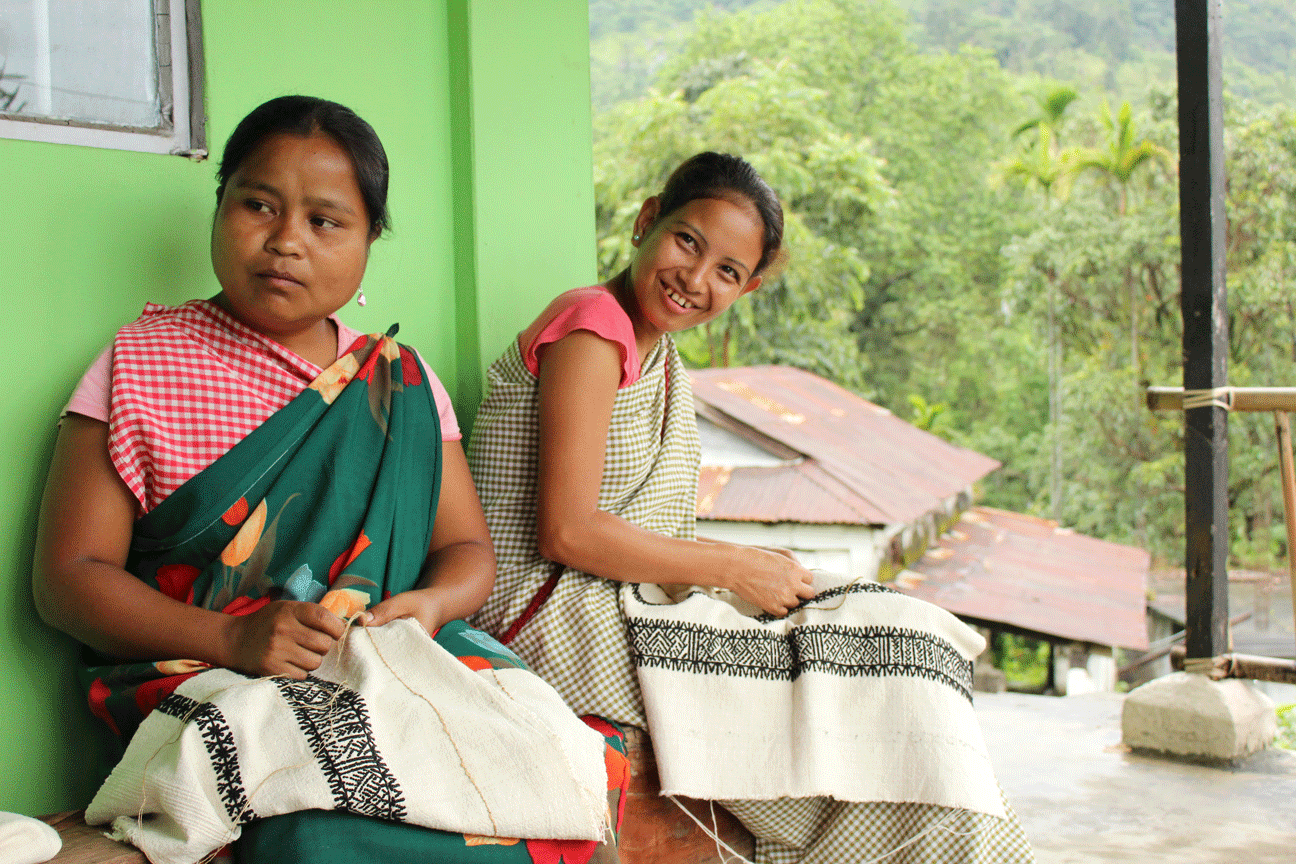
 Translate
Translate
